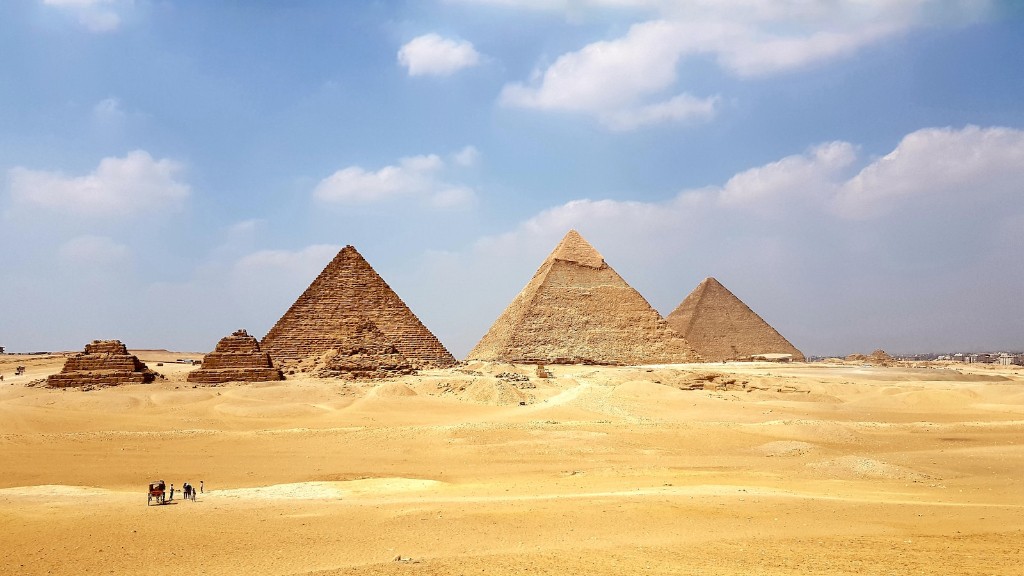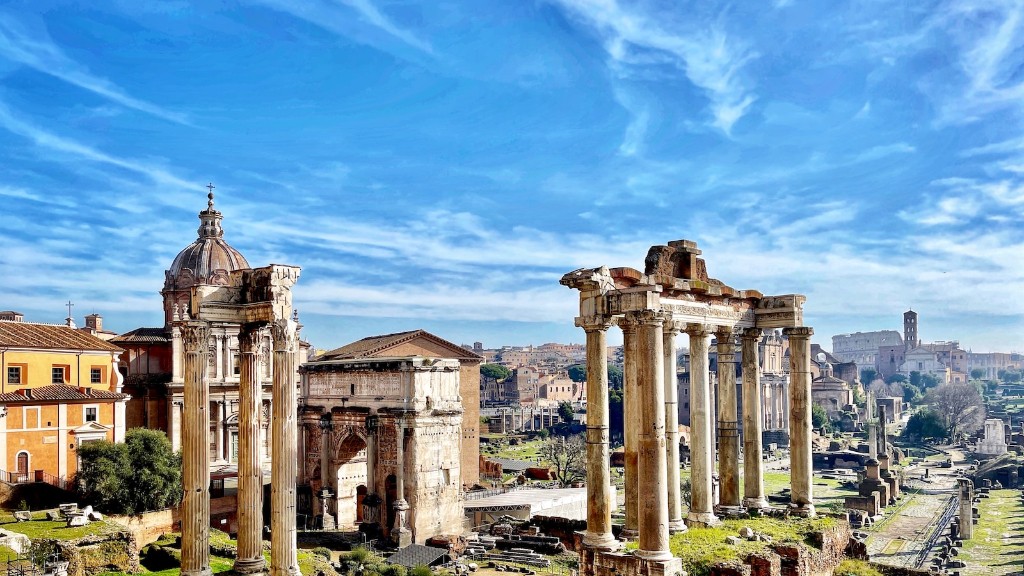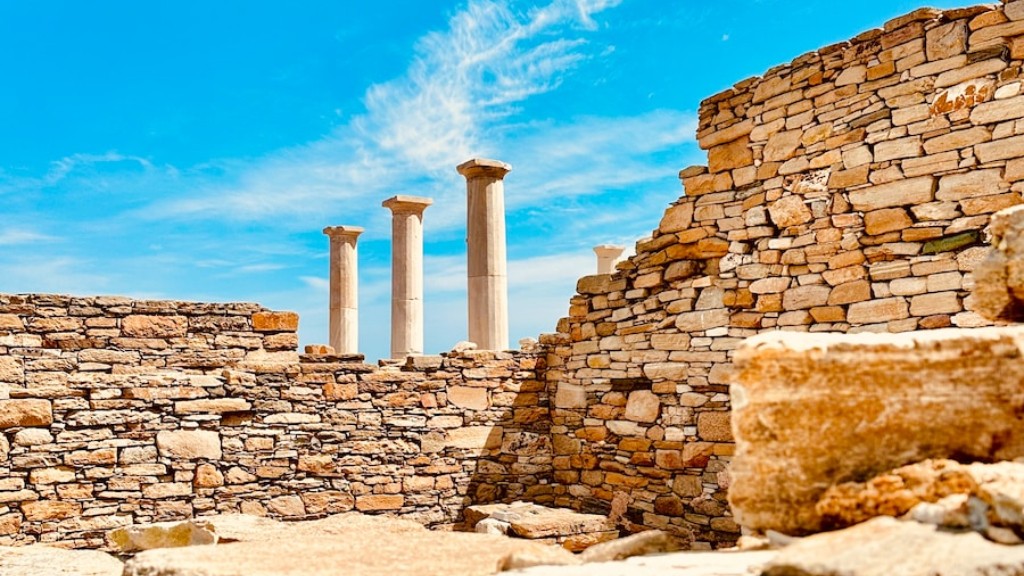Mummification In Ancient Egypt
Mummification was central to Ancient Egyptian burial practices and had a great spiritual significance. Mummification is believed to have begun in Ancient Egypt around 2600 BCE, as early stages of the process were reported as early as the Old Kingdom. The practice involved embalming the body with a range of preservatives to prevent decomposition, and then wrapping it in linens. It was believed that this prevented the deceased from becoming a ‘bridge’, which legend held would allow them to travel between the living world and the spirit world.
The Egyptians believed that mummification brought the dead into a state of harmony with the gods that would eventually enable them to become resurrected from the dead. This belief was expressed in various funerary rituals and sacred text, and was also central to their tombs. Every part of the procedure was aimed to ensure the preservation of the body, protect it from damages, and create an environment to preserve the body intact enough to gain access to the afterlife.
The process began with the removal of the internal organs, including the liver, stomach, lungs, and intestines. These were cleansed and then stored in four jars, called canopic jars. The body was then prepared for wrapping. It was covered in salt and spices, and then washed in alcohol or wine. After the washing, the body was covered in rags, linen, oils and scented balms, and wrapped in a thin sheet of linen or waxed cloth. A priest or embalmer would then attach the coffin to the body, so that it could be moved with relative ease without damaging the body.
Once the body was mummified, it was placed in a coffin, usually made of stone or wood, which would be decorated with symbols and inscriptions of the gods and goddesses. These inscribed coffins were thought to be portals for the spirit of the deceased to enter the afterlife. The coffin could also be covered with materials such as gold or silver, and adorned with jewels or semi-precious stones. Some of the more elaborate coffins were inlaid with glass, which the Egyptians believed provided a magical power to the deceased.
The coffin was also inscribed with the name and words of power for the spirit’s journey to the afterlife. These inscriptions were thought to protect the deceased’s spirit from being denied entry into the Underworld, and also served as a prayer for the deceased’s safe journey. The Egyptians believed that the coffin was another step in preparing the deceased’s soul for the afterlife, and that its presence would provide them with power in the afterlife.
Symbolism of the Coffin
The coffin was an important symbol for the Egyptians, as it represented the journey of the soul from the physical world to the spiritual realm. In some cases, the coffin was also a physical reminder of the deceased’s family, as they were often inscribed with references to the family’s home, or the deceased’s birthplace. It was also thought to be a representation of the spiritual renewal of the deceased in the afterlife, as the coffin symbolised the transformation of a physical being into a supernatural entity.
The Egyptians held the coffin in high esteem, as it was seen as the vessel that contained the journey of the soul to eternity. They believed that the coffin was a means of protecting the soul from all harm in its new environment, and that it could help them to reach their destination. The Egyptians believed that the coffin provided them with a way to reunite with their loved ones in the afterlife.
Importance of the Coffin
The coffin was an essential part of the Egyptian burial process. The Egyptians believed that the presence of the coffin helped prepare the deceased for the journey to the Underworld, and provided them with a means of protection from any perils they might face along the way. The coffin also served as a reminder of the deceased’s family and their legacy, as well as a reminder of their spiritual rebirth in the afterlife.
The coffin was seen as a vehicle for the deceased to travel to, and from, the afterlife, and what it represented was central to the beliefs of the Egyptians. The presence of the coffin provided them with hope and comfort that they would reach the afterlife safely and be reunited with their ancestors. It also provided them with a sense of security in the belief that they would have access to the afterlife, and that their spirit would be immortal.
Funerary Symbolism in Coffin Design
In addition to its practical purpose, the coffin also had numerous spiritual and funerary implications for the Egyptians. These implications were often symbolised in the design and decoration of the coffin. Inscribed on the coffin would typically be the four Sons of Horus, a symbol associated with safety and protection. The name and words of power of the deceased would also be inscribed on the coffin, ensuring that the spirit of the deceased would have access to the afterlife.
The coffin was also often decorated with hieroglyphs and images of gods and goddesses, which the Egyptians believed provided a connection between the spirit world and the physical world. They believed that these symbols would protect the deceased’s soul from any harm or danger they might face in the afterlife, as well as providing a means of communication with the gods. The coffin also served as a reminder of the deceased’s family legacy, and the decorations often featured images and symbols of the deceased’s origin, such as their birthplace.
Symbolism of the Coffin in Modern Times
Today, the symbolism of the coffin remains a part of our cultural heritage. Though the spiritual implications have changed, the coffin still carries many of the same symbolic meanings. Coffins are still used to reunite families after a loved one’s passing, as a reminder of the continuity of life. The coffin is also seen as a symbol of hope, of providing the deceased with a safe journey to the afterlife.
The coffin is also still seen as a symbol of protection, with many cultures believing that the presence of the coffin will grant the deceased’s soul safety from any perils they may face along the way. In some cultures, the coffin may even be inscribed with words of power and symbols of protection in order to grant the deceased safe passage into the afterlife.
Coffins in Other Cultures
The coffin is used in a variety of different cultures around the world. In some cultures, coffins are used as a means of transportation for the deceased, such as in Ghana, where wooden coffins are placed on top of canoes and taken to the place of burial. In other cultures, such as the Persians, coffins are made of sugar cane and decorated with symbols and words representing the deceased’s journey to immortality.
In some cultures, such as the Yoruba people in West Africa, the coffin is a symbol of rebirth, with the deceased beginning a new journey in the afterlife. This symbolism is reflected in the decorate and detailed coffins, which feature painted designs and powerful words. In other cultures, the coffin is a symbol of protection, as the presence of the coffin is thought to keep the deceased safe from any perils they may face in the afterlife.
Conclusion
The coffin has been used by Ancient Egyptians since 2600 BCE, and its symbolism has been a part of human culture ever since. The coffin was used to reunite the deceased with their family, to provide them with protection from any dangers they might face along the way, and to grant them access to the afterlife. It also served as a reminder of the deceased’s spiritual and cultural legacy, and was an important part of the burial process of Ancient Egypt. Today, the coffin is still used in a variety of different cultures, and is seen as a symbol of protection, hope, and continuity.



